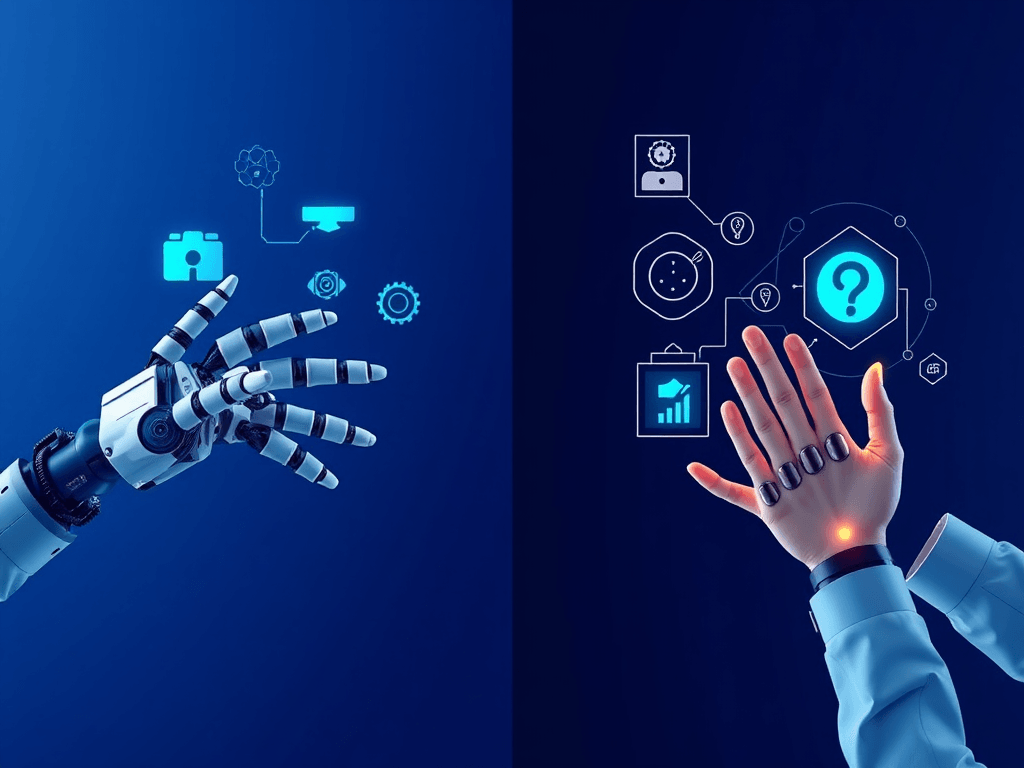Why 90% of Companies Still Resist AI — And How Context Engineering Can Change the Game
July 21, 2025 | by Matos AI

Have you ever wondered why, even with all the buzz around artificial intelligence, only 10% of companies use AI significantlyThe news of the last 24 hours reveals a fascinating paradox: while technology advances exponentially, corporate adoption moves at a snail's pace.
Today I'll share insights into three movements that are redefining our relationship with AI and why this matters for the future of your business.
The Paradox of Organizational Resistance
THE analysis of Folha de S.Paulo brought to light something I've been observing for years in the innovation ecosystem: the obstacles to AI adoption are not primarily technical, but economic and organizational.
Join my WhatsApp groups! Daily updates with the most relevant news in the AI world and a vibrant community!
- AI for Business: focused on business and strategy.
- AI Builders: with a more technical and hands-on approach.
In my experience accelerating thousands of startups, I've seen this happen time and time again. Employees and middle managers, fearing loss of position or control, end up delaying or blocking implementations that could revolutionize their companies. This is what the article calls the "tyranny of the inefficient"—a phenomenon where short-term personal interests prevail over long-term organizational gains.
This reminds me of a startup I mentored a few years ago. The CEO was thrilled with an automation solution that would save the sales team 401,000 pounds of time. But implementation took eight months because the sales director created a series of "necessary validations" that, in practice, were ways to protect his territory.
The Real Obstacles
According to the research, the main factors preventing the spread of AI are:
- Excessive bureaucracy: Departments like HR create unnecessary layers of approval
- Legal and regulatory concerns: Fear of compliance and privacy concerns
- Internal protectionism: Middle managers blocking changes that threaten their status quo
- ROI Justification: Difficulty in demonstrating returns on high infrastructure investments
The good news? Market pressure will eventually promote the spreadCompanies that do not adapt will simply lose competitiveness.
The Context Engineering Revolution
While many organizations still struggle with basic adoption, a new trend is emerging in Estadão: context engineering.
If you're still stuck in prompt engineering—the practice of creating specific commands for AI—get ready for a paradigm shift. Context engineering creates a holistic approach, integrating memories, tools and multiple data streams to optimize not just isolated responses, but systemic performance.
Think of it this way: instead of giving specific commands to an AI assistant, you're creating an information-rich environment where the AI can make smarter, more contextualized decisions. It's like the difference between giving specific directions and providing a complete city map.
What This Means in Practice
Context engineering involves:
- Storage and retrieval of previous data: AI “remembers” past interactions
- Integration of complementary tools: APIs, databases, external systems
- Dynamic information management: Context that adapts in real time
- Advanced architectures: Systems that support complex data flows
In my mentoring work, I've already seen startups implementing these approaches with impressive results. One fintech I work with managed to reduce credit analysis time by 60% using context engineering, integrating behavioral data, financial history, and real-time market patterns.
The Cognitive Sedentarism Alert
But not everything is rosy in this digital revolution. O Globo brought an important warning about “cognitive sedentarism” — a condition where excessive use of AI reduces our memory, creativity, and attention span.
MIT research suggests that frequent AI users may experience declines in neural and behavioral performance. It's the paradox of convenience: by outsourcing too much of our thinking to machines, we risk atrophying our own cognitive capacity.
This reminds me of the CACACA concept I developed to describe the essential skills of the future of work: Creativity and Autonomy, Collaboration and Adaptability, Connection and AffectionIronically, these are exactly the capabilities that cognitive inactivity can compromise.
How to Balance AI and Human Capability
The solution is not to abandon AI, but to use it consciously:
- Use AI as an amplifier, not a substitute for thought
- Maintain intellectual stimulation practices: reading, writing, mental exercises
- Set aside time for reflection without digital assistance
- Develop critical thinking about when to use or not to use AI
Parallel Movements: Democratization and Specialization
As we face these challenges, Microsoft has launched a free course on generative AI in partnership with LinkedIn, democratizing access to training. At the same time, invests significantly in Europe to improve AI performance in local languages.
These moves reveal an interesting strategy: democratizing basic access while specializing in specific niches. It's a valuable lesson for any company looking to position itself in the AI market.
The Financial Sector at the Forefront
Anthropic's new solution for financial services (Claude for Financial Services) exemplifies how specific sectors are rapidly advancing in AI adoption. By integrating internal and external data, generating dynamic reports, and offering process automation, the tool demonstrates how AI can be truly transformative when implemented well.
What catches my attention is that this solution comes with specialized support from consultancies such as Deloitte and KPMGIn other words, it recognizes that technology alone is not enough—expertise in implementation and organizational change is required.
Final Thoughts: Navigating the AI Paradox
The news of the last 24 hours reveals a fascinating moment: we are simultaneously advancing technologically and facing very human resistance. AI is becoming more sophisticated (context engineering), more accessible (free courses), and more specialized (sector-specific solutions), but it still encounters organizational and cognitive barriers.
For leaders and entrepreneurs, this represents both a challenge and an opportunity. Whoever can navigate these contradictions—intelligently adopting AI without falling into cognitive sedentarism, overcoming organizational resistance without ignoring legitimate concerns—will have a significant competitive advantage..
Three Practical Actions for Today
Based on these insights, I recommend three immediate actions:
- Audit your organization: Identify where the real obstacles to AI adoption are
- Invest in context engineering: Think beyond isolated prompts, create AI ecosystems
- Develop conscious usage practices: Use AI to amplify, not replace, your cognitive ability
In my mentoring work, I help startups and companies navigate precisely these challenges—finding the balance between technological innovation and human development. Because at the end of the day, the future belongs neither just to humans nor just to machines, but to those who know how to orchestrate this partnership intelligently.
And you, how are you preparing your organization for this new AI reality?
✨Did you like it? You can sign up to receive 10K Digital's newsletters in your email, curated by me, with the best content about AI and business.
➡️ Join the 10K Community here
RELATED POSTS
View all



